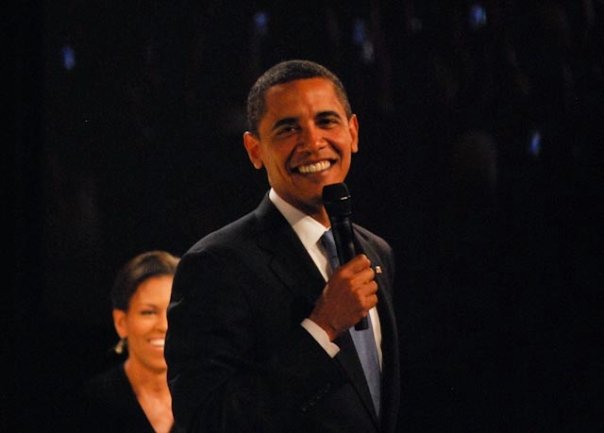
It’s 14 years since the first Obama inauguration. It’s time that seems to have flown by, while also spanning an epoch.
I took this photo at the Obama campaign Inaugural ball, and it just popped up as a Facebook Memory. The happiness in those faces, back then, was shared by thousands of staff and volunteers, tens of millions of Americans of widely varying backgrounds and beliefs, and countless millions of people around the world. It looked as if Obama’s promise of change based on hope was coming true, through the power of liberal democracy to bring us all together.
But were we wrong? Was this not the beginning, but the end of that hope? In the time since, we’ve gone from the peak of liberalism to the resurgence of illiberalism, nationally and globally.
Partly because we don’t teach students how to be citizens any more, many people are confused about what liberalism is — doesn’t it just mean you’re a lefty? No. Everyone who believes in modern democracy is a liberal — if they still do believe in democracy. It was won at such great cost, but many of us seem willing to toss it away.
Liberalism is the philosophy of freedom, tolerance, and self-governance on which our democracy is based (which is why it’s often called a liberal democracy).
Usually, Americans only call people on the left liberals. But conservatives are liberals too — if they believe in liberal democracy. And if they don’t, they aren’t conservatives.
Trumpists aren’t conservatives. It’s common to call them that, but it’s a serious mistake. That’s because Trumpism is no form of liberalism at all. Trumpism is classic, nationalist authoritarianism, which can become outright fascism. As practiced by Trump and his most enthusiastic enablers and imitators, it has.
Since Obama’s election (though starting well before), support for authoritarianism has been rising rapidly, most dangerously on the right. But it’s been happening on the left, too.
On the left, authoritarianism had taken the form of the dogmatic intolerance that gets called wokeism — when that term isn’t being used in utterly bad faith by Trumpists, who deploy it against any honest discussion of the bigotry their demagoguery relies on.
The wokeism that actually is a problem is, like Trumpism, hostile to liberalism, although for different reasons. Both claim access to higher sources of authority than liberalism, which is founded not on authority but negotiation. Liberalism is designed for a world where beyond a few core principles, we’re not sure what the highest authority is.
As always with extreme nationalism, Trumpism claims a higher authority based on the imagined destiny of an ethnic nation as personified in a “strong man” leader.
Wokeism claims a higher authority based on the awakened consciousness of the people. “Woke” is originally an African-American slang term for knowing what’s really going on in a hard, unfair world. But it was adapted and appropriated by academic theorists, who gave it a more Marxian meaning of “awakened from false consciousness” — false consciousness being the illusion that an oppressive system is just normal reality. Capitalism, colonialism, identity-based discrimination, or even concepts and language become tools of oppression by building and maintaining false consciousness.
This is why some schools are introducing social justice teaching into seemingly unrelated classes like math and science, which are seen as imposing a Western, capitalist-oriented, false consciousness. And it’s why wokeness focuses so intensely on “correct” terminology, like the theoretically precise but emotionally flat “unhoused” in place of the poetically moving but presumably oppressive “homeless,” or the culturally oblivious “Latinx” in place of a variety of words used by the actual people to whom it’s been applied. If language imposes false consciousness, the thinking goes, it can liberate from false consciousness, if it’s used just right.
The trouble is, once you believe you know better than others what’s false and what’s true, you’re on your way to authoritarianism: those who disagree with you can only be mistaken or evil. The authoritarianism in this case isn’t based on nationalism, but rationalism: the postmodern critical theory from which wokeism springs — and which woke thinkers sometimes capitalize, authoritatively, as Theory.
This is one reason why extreme wokeness seems so much like Puritanism: the elevation of dogma to unquestioned authority. Dogmatists, whether religious or secular, try to make reality conform to their ideas about it, instead of the other way around. The latter happens to be the far less certain, but more tolerant, path of liberalism.
Some of the critiques of liberalism, from both the right and the left, are worth considering. Liberalism’s very reasonableness can feel culturally empty and meaningless, which makes it vulnerable to grand narratives of making the nation “great again.” At the same time, liberalism’s claim of reasonableness has often concealed heavy cultural and economic biases, with full freedom and equality granted only to members of privileged groups. That makes it vulnerable to grand theories of revolutionary liberation.
In both views, the current, liberal order can’t be reformed, but must be torn down.
But although liberalism is far from perfect, it remains the best way we’ve yet found to protect individual people from domination — in large part because it recognizes how flawed all people are. Liberalism accepts imperfection — of knowledge and of character — as inherent in human nature. So self-critique and reform are part of its design, which is why liberal societies have made more progress, of all kinds, than any others.
Authoritarianism, by definition, can’t tolerate critique of itself, and equates reform with corruption.
What’s happened to us since the hope-filled days of Obama isn’t so much a polarization of left vs. right, but of authoritarians vs. liberals, whether of the left or right.